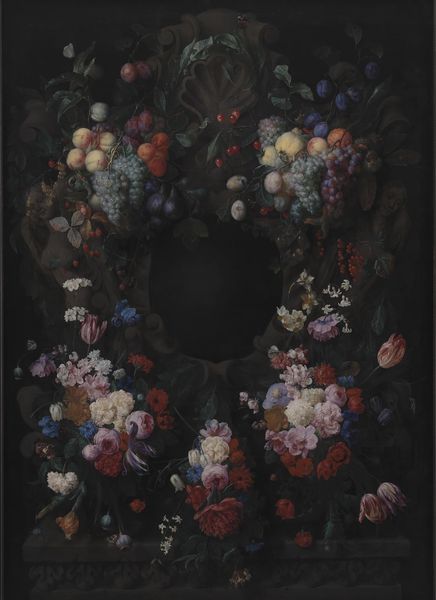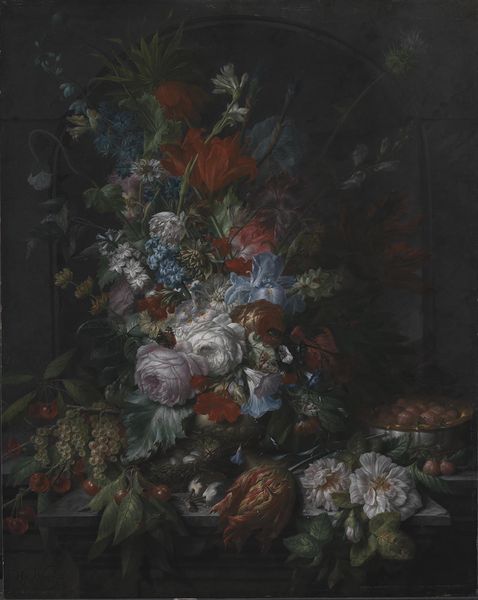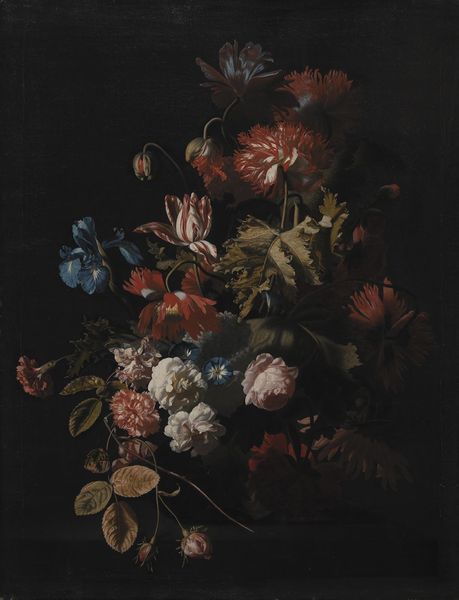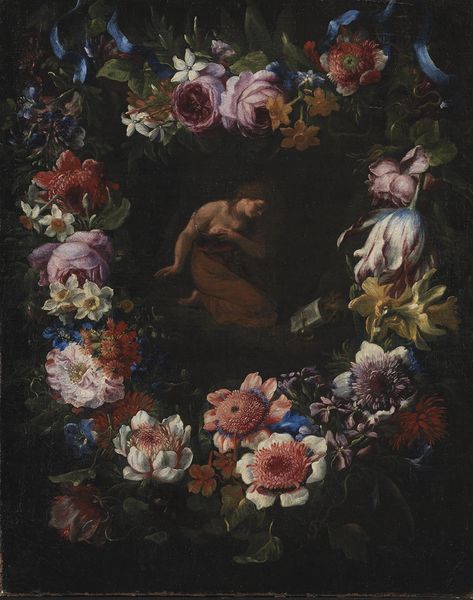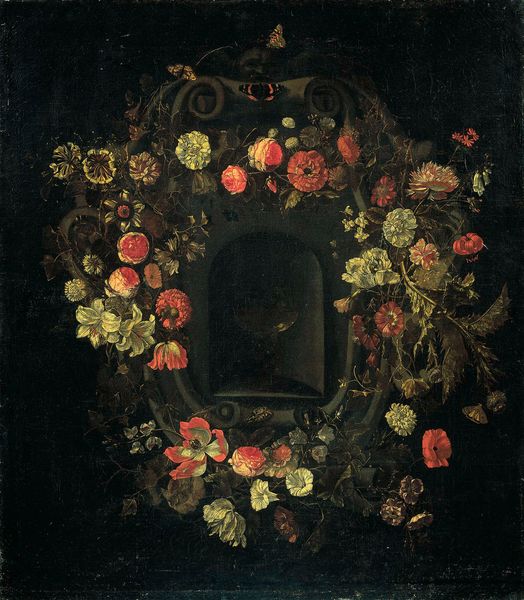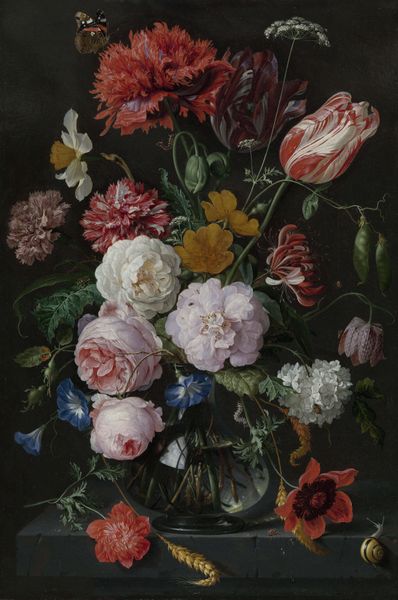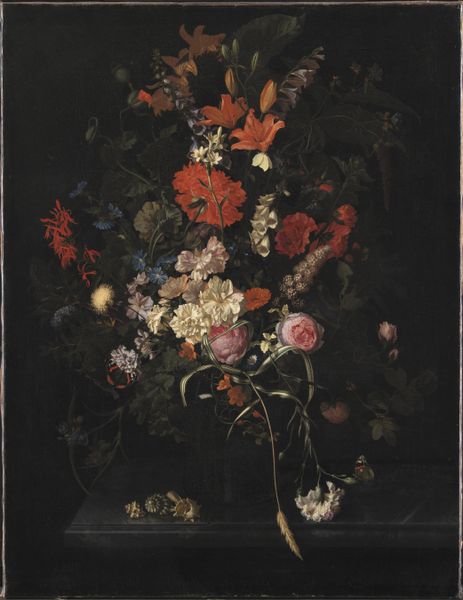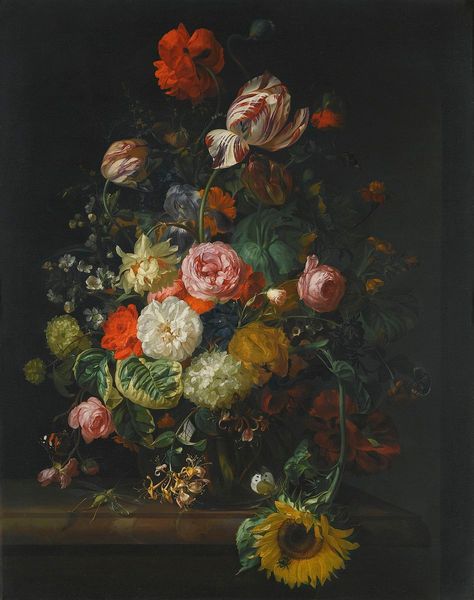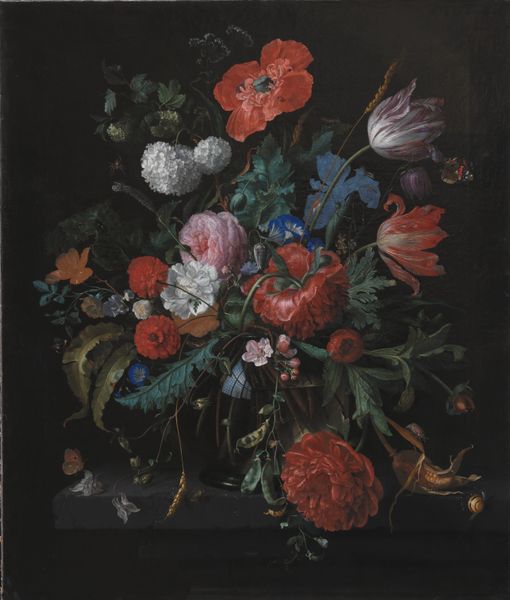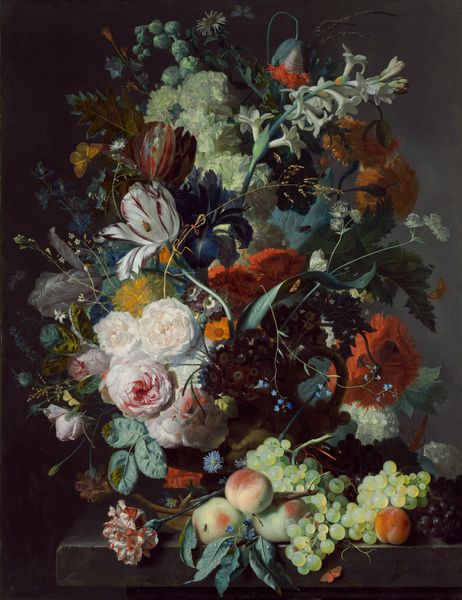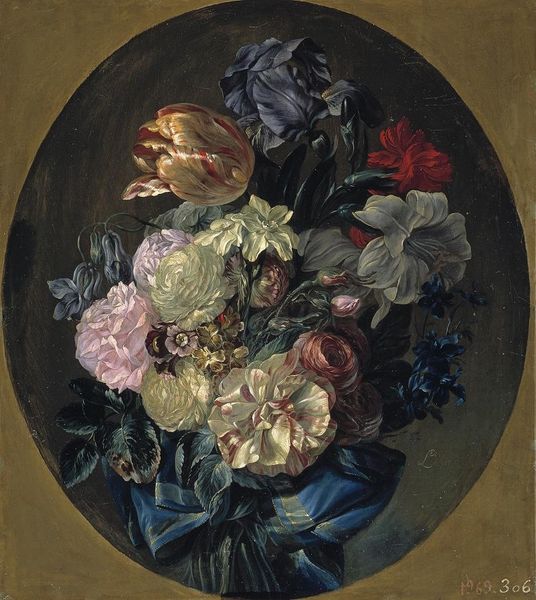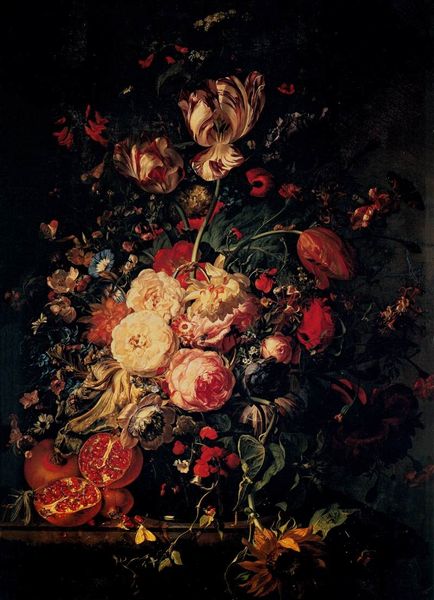
painting, oil-paint, canvas
#
organic
#
baroque
#
painting
#
oil-paint
#
form
#
canvas
#
organic texture
#
realism
Dimensions: 166.5 cm (height) x 120.5 cm (width) (Netto), 188 cm (height) x 142 cm (width) x 7.5 cm (depth) (Brutto)
Curator: Here we have Joris van Son's "Stone Cartouche with Fruit and Flower Garland," created in 1664 using oil paint on canvas. Editor: It strikes me immediately as rather somber, even melancholic. The darkness seems to engulf the forms, only allowing flashes of color and texture to emerge. Curator: Indeed. It’s essential to remember that during the Baroque period, still life paintings weren’t just about pretty arrangements. These meticulously crafted compositions often carried symbolic weight. The types of flowers and fruit, their state of ripeness, and even the presence of insects could convey moral or religious messages. We have to ask ourselves: What underlying cultural anxieties about mortality are in play? Editor: Absolutely. The artist’s masterful control of light and shadow, what some might call tenebrism, highlights the realism of each piece. You can almost feel the textures. Consider how Van Son arranges these flowers, playing with contrasts between the delicacy of a rose petal and the smooth surface of a plum. Curator: And it is vital to consider its patrons. Who was commissioning work such as this? These still lifes would have served as markers of cultural capital—an aesthetic form consumed and displayed amongst wealthy, predominantly male, elites. This piece offers itself as an exercise in consumption as much as it is an aesthetic piece. Editor: Right, because if we ignore the painting’s internal architecture and formal attributes, it would fall to mere decoration. Look closely, for example, how the fruits appear on the verge of decay, a possible vanitas symbol urging viewers to ponder the ephemerality of earthly pleasures. Curator: Precisely! Understanding art isn’t merely about surface-level observations. It's about uncovering its ideological frameworks—unpacking the complexities of gender, power, and social status embedded within each brushstroke. Editor: Well said. It seems to me that by examining both the artist’s formal methods and historical contexts, we’ve gleaned some really fresh insights. Curator: Agreed! Bringing together both of these aspects lets us see the deeper symbolic relevance and its ongoing discourse.
Comments
No comments
Be the first to comment and join the conversation on the ultimate creative platform.
